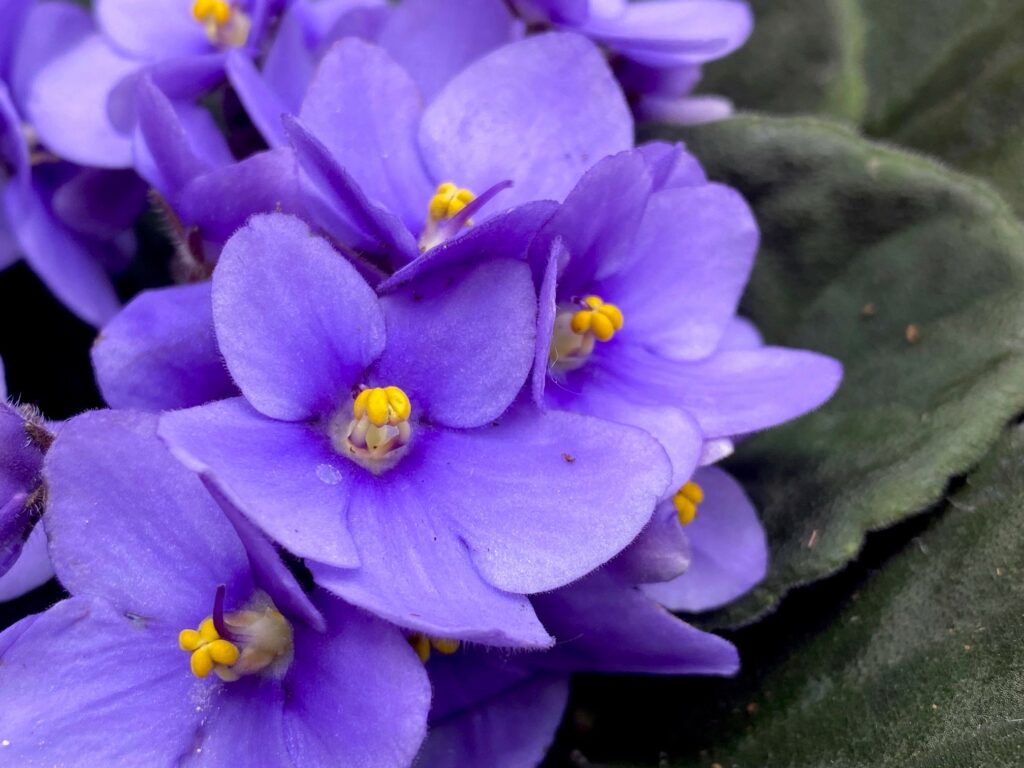Plant toxicity can often make choosing a plant a daunting task for pet owners. Luckily, there are numerous pet-friendly houseplants that can safely coexist with our furry friends. So check out our guide to pet-friendly houseplants to learn which plants are harmless to their curious noses.
African Violet (Streptocarpus)
These plants produce bright blooms and can flower for many months.
African Violets like bright, indirect sunlight. Direct sunlight will scorch the plant, whereas too little light will halt growth.
Allow the top inch of soil to dry between waterings. Be attentive and apply water directly into the soil or stand in a tray of water, as water droplets can mark the leaves.
These plants like average room temperatures during the day, and at night do not like temperatures below 16°C – this applies year-round. Keep humid but do not mist.



Areca Palm (Dypsis lutescens)
Areca Palms are tall, impressive, and gorgeous houseplants that add a tropical touch to your home. Also known as the ‘Butterfly Palm’, Areca’s have been found to reduce stress and anxiety – they are also one of the best air purifying houseplants.
Areca Palms like bright, indirect light. If the leaves on these plants turn yellow, it is an indication that they are receiving too much light.
In spring & summer water these plants often enough to keep the soil moist. In autumn & winter allow the soil to dry between watering.
Average room temperatures are fine, and they will not tolerate temperatures below 10°C. They enjoy high humidity so make sure to mist their leaves regularly.



Boston Fern (Nephrolepis exaltata)
Boston Ferns are lush plants that help to maintain humidity levels indoors. Bathrooms are a great location for these plants as they should never be allowed to dry out. Even though they are non-toxic, it’s best to keep this fern out of reach as you don’t want it to appear ragged from meddling pets.
Keep your Boston Ferns shaded from direct sunlight; ideally they like a spot where indirect light is available.
The soil should never dry out completely. After watering, allow the water to soak through thoroughly, and then tip away the excess after 15 minutes.
They like average room temperatures and will not tolerate temperatures below 10°C. Grouping this plant with others will help to increase humidity levels.



Calathea
Calathea’s have unique, and ornately patterned leaves that make extremely eye-catching. They are very easy to look after and have air purifying qualities. Did you know that Calathea’s leaves droop during the day and become more upright at night?
Prefers indirect sunlight. Keep in a well lit spot with partial shade as too much light can affect variegation.
From spring to autumn keep the soil moist, reducing how water intake during winter. When watering make sure excess water has drained away.
Likes warm temperatures, and can cope with temperatures no lower than 15°C. Be sure to mist these plants regularly as high humidity is a must.



Spider Plant (Chlorophytum comosum)
Recognized for its air-purifying properties, the Spider Plant is a beautiful, cascading plant that is ideal for beginners because it’s fairly low maintenance. Cats like Spider Plants because they are mildly hallucinogenic – providing similar effects as catnip.
Spider plants like bright, indirect sunlight. They can tolerate shade but this will slow down growth and they may lose their variegation.
In spring & summer keep the soil slightly moist. In autumn & winter water sparingly, allowing the top 2 inches of soil to dry before watering.
Likes room temperature, and can survive in winter if the temperature is kept over 8°C. They prefer higher humidity so be sure to mist their leaves occasionally in the summer.



Did you find our guide to pet-friendly houseplants useful? If you need some tips on looking after more of your houseplants click here to see our selection of care leaflets.